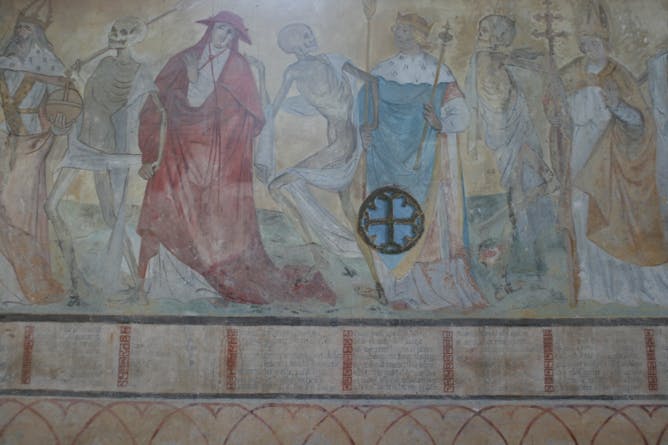|
We’ve been told for years that the developing teen brain is the the reason for risky adolescent behavior, but there’s much more to the story. A review of years of scientific research into teens suggests that it is time to put this belief to rest. Risky behavior might more accurately be attributed to a “biologically driven need for exploration.”
As President Donald Trump prepares to visit Asia this week, Korea watcher Katharine Moon reconsiders the conventional wisdom that China can rein in North Korea’s nuclear ambitions.
And as many celebrate All Souls’ Day on Thursday, Nov. 2, to honor those who have passed on, we bring you a series of articles on how cultures have dealt with loss and grief. In today’s piece, University of Montana’s Ashby Kinch explains how in medieval societies, the dead remained well integrated into the community – they were simply considered another age group.
|

A group of teenagers hanging out.
George Rudy/Shutterstock.com
Dan Romer, University of Pennsylvania
In recent years, the notion of a structurally imbalanced teenage brain has been faulted for bad choices. A review of studies suggests that a deficit in brain development is not to blame.
|

Does the road to containing the North Korea threat really run through Beijing?
Reuters/KCNA
Katharine H.S. Moon, Wellesley College
Politicians and pundits are overplaying China's influence over Kim Jong-Un.
|

Detail of figures from the Dance Macabre, Meslay-le-Grenet, from late 15th-century France.
Ashby Kinch
Ashby Kinch, The University of Montana
For medieval cultures, the dying process and death itself was a 'transition,' not a rupture.
|
|
|
|
|
|
|
|
|
Trending on site
|
-
Evelyn Milagros Rodriguez, University of Puerto Rico - Humacao
A Puerto Rican librarian with a personal relationship to hurricanes describes the brutal reality of life on this Caribbean island more than a month after Maria and Irma left their mark.
-
David Rosenberg, Wayne State University
It can be very hard for people to accept that they – or their family member – are not to blame for their mental illness. Seeing the evidence in a scan can make a difference.
-
Jon Keeley, US Geological Survey
Fire is part of the ecology in much of California, but recent wildfires have caused much more damage than past burns of similar size. A fire ecologist points to two key factors: winds and population growth.
|
|